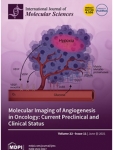Supervisory institution:
National Science Center
Project manager:
Igor Iatsunskyi, Ph.D, D.Sc.
Budget:
2 018 400,00 PLN
Start date:
07.2021
Duration:
48 months
Contract number:
UMO-2020/38/B/ST5/00176
One of the challenges facing humanity today is the production of the clean energy from renewable sources. One of the possible solutions is hydrogen produced from the decomposition of water by solar energy in photoelectrochemical cells (PEC).
The idea of photoelectrochemical cells is very similar to the idea of photovoltaic solar cells - the semiconductor material absorbs sunlight, and then the radiation energy is converted to chemical energy. The resulting electron-hole pair reacts with the electrolyte and gives rise to hydrogen and oxygen molecules generation. A photon absorbed in an n-type semiconductor generates an electron and a hole. The hole oxidizes water and oxygen is formed - this is a process that occurs on the photoanode, while an electron on the cathode reduces water and hydrogen is formed.
The key role of the PEC cell is played by the anode; therefore certain criteria should be used in the selection of the material. Photoanode should:
- have an energy gap of 1,5-3,0 eV, which on the one hand corresponds to the maximum absorption in the vis range and on the other hand is sufficient for photoelectrolysis;
- have a surface characterized by high resistance to corrosion in aqueous electrolyte solutions and stability during cell operation;
- be an N-type semiconductor;
- characterized by the fast charge transport to electrolyte and high charge motility in photoanode;
- have negative flat Band Potential VFB (Flat Band Potential).
The main goal of the project is development and investigation of novel nanocomposites based on 1D semiconductor materials (Si nanowires – SiNW, ZnO nanorods – ZnO-NR, and TiO2 nanorods – TiO2-NR) functionalized/modified by MXene (e.g. Ti3C2) and ALD metal oxides - MOx (TiO2, ZnO) layer for solar water splitting. The developed nanocomposites (SiNW/MXene/MOx; ZnO-NR/MXene/MOx and TiO2-NR/MXene/MOx) are expected to demonstrate new fundamental properties (high surface area, enhanced charge carrier separation, stability, increased absorption) which will enhance the PEC efficiency of fabricated photoelectrodes.
To increase photoelectrochemical/photocatalytic activity, the surface of the nanocomposite will be modified with TiO2, ZnO and TiO2/ZnO using ALD. In order to gain fundamental knowledge of this type of new nanocomposites, it is necessary to conduct detailed characterization of their chemical, electro-optical, and photoelectrochemical properties and find their interrelations.
In order to gain fundamental knowledge of this type of new nanocomposites, it is necessary to conduct detailed characterization of their chemical, electro-optical, and photoelectrochemical properties and find their interrelations.
In order to achieve the objectives, the following tasks will be taken:
- Fabrication of 1D semiconductor /MXene/Metal Oxides nanocomposites;
- Investigation of structural parameters and optical/electrical properties of produced nanocomposites;
- Study of PEC properties of type 1D nanocomposites semiconductor / MXene / metal oxides;
- Analysis of PEC performance.


